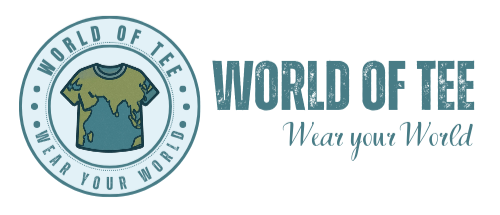
The Influence of Historical Fashion on Today’s Trends
Share
Fashion is a constantly evolving art form, yet it often draws inspiration from the past. Throughout history, iconic styles and garments have left an indelible mark on the fashion industry, influencing modern trends in ways both subtle and profound. From the structured silhouettes of the Victorian era to the bold patterns of the 1970s, historical fashion continues to shape the way we dress today. In this blog, we’ll explore how different periods of fashion history have influenced contemporary trends.

1. Victorian Elegance and Modern Structure
The Victorian era, spanning from 1837 to 1901, is known for its opulent fabrics, intricate detailing, and structured silhouettes. Corsets, bustles, and voluminous skirts defined women’s fashion, while men’s attire featured tailored coats and high collars.
Today, we see the influence of Victorian fashion in several modern trends:
- Structured Silhouettes: The emphasis on structure and form from the Victorian era is evident in today’s fashion through fitted blazers, high-neck blouses, and peplum tops. These garments echo the tailored precision and elegance that defined the period.
- Lace and Embroidery: Delicate lace and intricate embroidery, hallmarks of Victorian fashion, have made a strong comeback in contemporary designs. From bridal gowns to evening wear, these details add a touch of vintage elegance to modern wardrobes.
- High Collars and Ruffles: High-neck blouses with ruffled collars are reminiscent of the prim and proper Victorian style. These elements have been reimagined in today’s fashion to create sophisticated and feminine looks.
2. Roaring Twenties and the Flapper Influence
The 1920s, also known as the Roaring Twenties, was a decade of liberation and rebellion against traditional norms. The flapper dress, characterized by its loose fit, dropped waist, and knee-length hem, became a symbol of the era’s carefree spirit.
Modern fashion continues to draw inspiration from the 1920s:
- Fringe and Beading: The intricate beading and fringe detailing that adorned flapper dresses are often seen in contemporary evening wear. These embellishments add movement and glamour to modern designs, reminiscent of the Jazz Age.
- Boxy Silhouettes: The loose, boxy silhouettes of the 1920s flapper dress have influenced today’s shift dresses and tunics. These styles offer a relaxed fit that exudes effortless chic, similar to the flapper’s carefree attitude.
- Art Deco Patterns: The geometric patterns and bold lines of Art Deco, which flourished during the 1920s, continue to inspire modern prints and accessories. These designs add a touch of vintage sophistication to contemporary fashion.
3. The Influence of the 1960s Mod Movement
The 1960s were a time of social revolution and experimentation in fashion. The Mod movement, with its focus on youth culture, brought about bold colors, geometric patterns, and a love for all things futuristic.
Today’s fashion still echoes the Mod movement in various ways:
- Mini Skirts: The mini skirt, popularized in the 1960s by designers like Mary Quant, remains a wardrobe staple today. This daring garment revolutionized women’s fashion and continues to be a symbol of youthful rebellion.
- Bold Prints and Colors: The bright, graphic prints and vibrant color palettes of the 1960s have made a resurgence in modern fashion. These eye-catching designs add a playful and retro flair to contemporary wardrobes.
- A-Line Dresses: The simple, clean lines of the A-line dress, a Mod favorite, are still popular today. This flattering silhouette is versatile and can be dressed up or down, making it a timeless addition to any wardrobe.
4. 1970s Bohemian and Retro Revival
The 1970s were defined by a mix of bohemian and disco styles, characterized by flowing fabrics, earthy tones, and an emphasis on individuality. The decade’s fashion was all about freedom of expression and breaking away from conventional norms.
Modern fashion frequently draws from the eclectic styles of the 1970s:
- Flared Pants and Wide-Leg Jeans: The flared pants and wide-leg jeans of the 1970s have made a strong comeback in recent years. These retro silhouettes offer a relaxed yet stylish alternative to skinny jeans, capturing the free-spirited essence of the era.
- Maxi Dresses and Skirts: The flowing maxi dresses and skirts that were a staple of 1970s bohemian fashion continue to be popular today. These garments are perfect for creating effortless, laid-back looks that are both comfortable and chic.
- Platform Shoes: Platform shoes, which were a disco-era favorite, have returned to the fashion scene with modern updates. These shoes add height and make a bold statement, echoing the flamboyant style of the 1970s.
5. The 1990s Grunge and Minimalism
The 1990s brought about a mix of grunge and minimalist styles, with a focus on comfort, practicality, and a rejection of over-the-top fashion. This era was marked by the rise of casual, unpretentious clothing.
Today’s fashion often revisits the trends of the 1990s:
- Grunge Influence: The grunge movement’s love for plaid shirts, ripped jeans, and combat boots is still evident in modern streetwear. This laid-back, edgy style continues to appeal to those who prefer a more relaxed, anti-fashion approach.
- Slip Dresses and Minimalism: The sleek, simple silhouettes of 1990s slip dresses and minimalist fashion have regained popularity. These pieces offer a clean, understated look that is both elegant and versatile.
- Oversized Clothing: The 1990s trend of oversized sweaters, jackets, and t-shirts has become a staple in contemporary fashion. This trend emphasizes comfort and ease, while still maintaining a cool, effortless vibe.
Conclusion
Historical fashion has a lasting impact on contemporary trends, as designers and fashion enthusiasts alike continue to draw inspiration from the past. From the structured elegance of the Victorian era to the rebellious spirit of the 1990s, each period of fashion history has left its mark on modern style. By understanding the influences of the past, we can better appreciate the trends of today and anticipate how they may evolve in the future. Fashion is a continuous dialogue between past and present, with each era contributing to the ever-changing tapestry of style.
